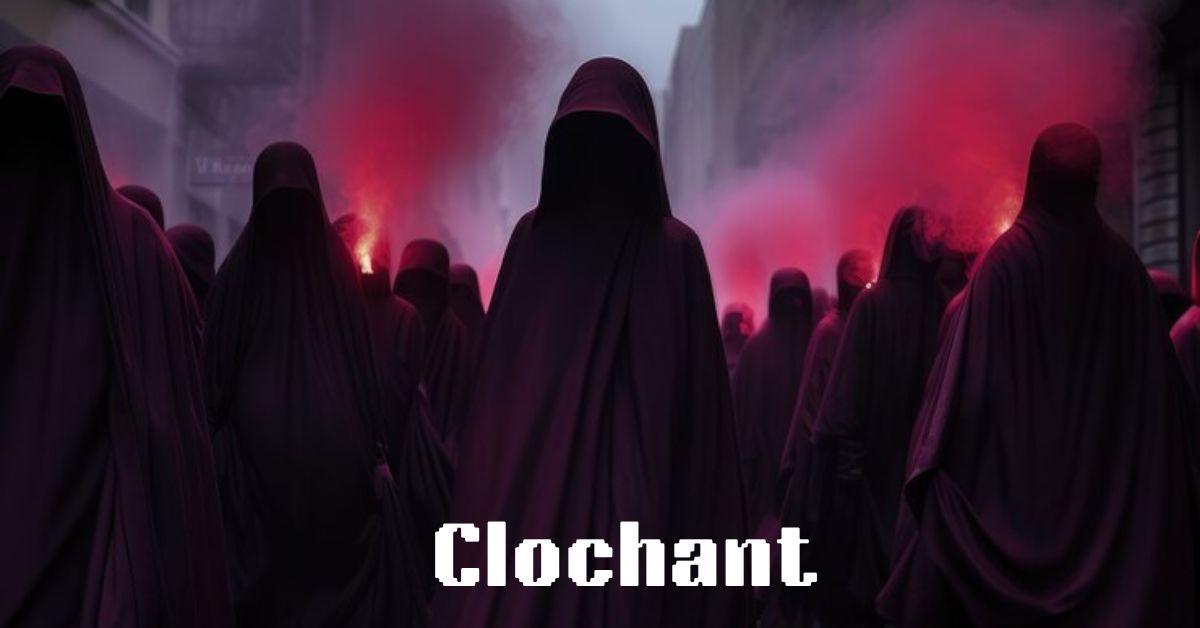History & Culture
The Enigmatic Clochant: An Exploration of Its Origins and Influence

Introduction
The term “clochant” has long captivated scholars and enthusiasts with its mysterious roots and multifaceted impact on cultural, religious, and societal practices. Stemming from ancient folklore, it is not just a word but a symbol deeply intertwined with the traditions and beliefs of various civilizations. This article delves into the rich history of clochant, its evolution over centuries, and its enduring influence in contemporary culture, art, and literature.
Origins of Clochant
The origins of clochant can be traced back to ancient civilizations where it was often associated with spiritual and mystical elements. The term itself is believed to derive from an archaic language, possibly Proto-Indo-European, with “cloch” meaning “bell” and “ant” meaning “chant” or “song.” This etymology suggests that it was initially linked to ritualistic practices involving sound and vibration, which were thought to connect the physical and spiritual realms.
In early Mesopotamian culture, it was symbolized by sacred bells used in temples to summon deities or ward off evil spirits. Similarly, in ancient Egypt, the sound of bells was integral to various religious ceremonies, believed to guide the souls of the deceased to the afterlife. These early references highlight it’s role as a bridge between the human and the divine.
Clochant in Ancient Folklore and Mythology
As civilizations evolved, so did the interpretations and significance of clochant. In Greek mythology, it was represented by the ringing of sacred bells associated with the goddess Hecate, the deity of magic and the crossroads. The ringing was thought to ward off malevolent spirits during nocturnal rites. This association with protection and guidance through sound became a recurring theme in various mythologies.
In Celtic folklore, clochant was embodied by the concept of “fairy bells,” which were said to signal the presence of the fae or to serve as warnings of impending danger. The Irish Banshee, a harbinger of death, was also connected to this concept, her wails likened to the eerie tones.
The Symbolism of Clochant in Religious Practices
It’s significance extended beyond folklore into religious practices, where it became a powerful symbol of spiritual communication. In Christianity, church bells are rung to mark significant events such as weddings, funerals, and mass, a tradition that echoes the ancient use of clochant. The resonant sound is believed to purify the environment, ward off evil, and call the faithful to prayer.
In Hinduism, bells (ghanta) are used in temples during rituals to invite the presence of the divine and drive away negative energies. The sound of the bell is considered to be the “sound of the universe” or “Om,” linking it back to the primal origins of clochant as a symbol of cosmic harmony.
In Literature and Art
Throughout history, it has inspired countless works of literature and art. In medieval Europe, the motif of clochant appeared in illuminated manuscripts and Gothic architecture, symbolizing the divine presence and the passage of time. The bells depicted in these works were not merely decorative but carried deep spiritual connotations.
Literary works have also explored the symbolism of clochant. Edgar Allan Poe’s poem “The Bells” vividly captures the varying emotions associated with different types of bells, from the joy of wedding bells to the ominous tolling of funeral bells. This exploration of sound and its emotional impact is a direct nod to the ancient concept of clochant.
Clochant in Modern Popular Culture
In contemporary times, clochant continues to find new expressions in popular culture. Films, music, and literature often use the motif of bells to evoke certain moods or themes. The iconic “bells of Notre Dame” in Victor Hugo’s “The Hunchback of Notre-Dame” and their adaptation in various films highlight it’s enduring symbolic power.
In modern music, the sound of bells is used to create atmospheric effects, from the haunting chimes in horror movies to the celebratory peals in holiday songs. The versatility of clochant as a symbol and a sound effect underscores its timeless appeal.
Linguistic Legacy
Linguists and anthropologists have long been fascinated by the linguistic legacy of clochant. The term has evolved over centuries, influencing various languages and dialects. In English, words like “clang” and “clink” can trace their origins back to it’s concept, reflecting the sound’s onomatopoeic roots.
The study of clochant also sheds light on how language evolves to accommodate cultural changes. As societies transitioned from agrarian to industrial and now digital, the meanings and applications of clochant have adapted, reflecting shifts in societal values and technological advancements.
Controversies and Challenges
Despite its enduring power, it is not without its controversies and challenges. In some cultures, the use of bells has been criticized for being intrusive or disruptive. Debates over noise pollution and the appropriate use of bells in public spaces highlight the tension between tradition and modernity.
Moreover, the commercialization of clochant in contemporary culture has raised concerns among purists who fear that its deep symbolic meanings are being diluted. The challenge lies in balancing respect for traditional interpretations with the innovative uses of clochant in modern art and media.
The Future of Clochant
As society continues to evolve, so too will the interpretations and applications of clochant. The advent of digital technology offers new avenues for exploring and preserving this ancient symbol. Virtual reality and augmented reality experiences can recreate historical uses of they providing immersive educational tools for future generations.
Furthermore, interdisciplinary research combining linguistics, anthropology, and technology can uncover new insights into the origins and it’s significance. By embracing both traditional and contemporary perspectives, we can ensure that the it’s legacy endures and continues to inspire wonder and fascination.
Conclusion
The term clochant, rooted in ancient folklore and steeped in cultural and religious significance, is a testament to the enduring power of symbols. From its origins in the spiritual practices of early civilizations to its modern expressions in art and popular culture, it has continuously evolved, reflecting the changing landscapes of human society. Despite facing challenges and controversies, its legacy remains a source of inspiration and intrigue. As we look to the future, the study and celebration of clochant will undoubtedly reveal even more about our shared human experience and the timeless connection between sound, symbolism, and spirituality.

-

 Entertainment6 months ago
Entertainment6 months agoBaddieHub: Transforming the Landscape of Digital Empowerment
-

 Health & Fitness5 months ago
Health & Fitness5 months agoThe //vital-mag.net blog The Complete Resource for Health
-

 Review8 months ago
Review8 months agoεμφανιση σβισμενον φωτογραφιων: Restoring Deleted Photos Made Easy
-

 Review7 months ago
Review7 months agoGet in Touch with TurboGeekOrg: Maximizing Your Experience on the Ultimate Tech Platform













